Targu Mures, in Romania’s Transylvania region, is a quiet city that just happens to contain a glittering marvel of 20th century architecture – the Culture Palace. It also has a jumble of other attractions that reflect its legacy as a city of trade, law, scholarship, and cultural diversity.
The city’s most famous building, known in Romanian as Palatul Culturii and in Hungarian as Kulturpalota, stands at Strada George Enescu 2, close by the city’s large central square, Piata Trandafirilor (“square of roses”). It was built in 1911-13, designed by the Budapest-based architects Marcell Komor and Dezso Jakab. Its style is a gorgeous combination of Viennese Secessionism and local folk art, intended to emphasize the distinctiveness of Hungarian culture – the predominant culture in this eastern part of Transylvania. The city’s mayor at the time, Gyorgy Bernady, invited artists from a noted art colony in Godollo, near Budapest, to decorate the building.
The front facade is adorned with pseudo-folk elements such as organically curved windows and doors surrounded by rustic-looking stone frames. And that’s not even mentioning the richly-colored mosaic details that depict idealized country folk from the surrounding region. The shimmering tiled roof is made from Zsolnay enamel from Pecs, Hungary, which was popular among Budapest Secessionists.
Above the main entrance, note the mosaic that depicts a female figure – personifying Hungary – with shields held each side of her. The one on the left is the crest of the city, with a knight’s sword skewering a bear’s head and a bleeding heart. This was the work of a prominent Godollo artist, Aladar Korosfoi-Kriesch.
Step into the Culture Palace’s entry hall, and you’ll see more of his handiwork in the frescos. You’ll also note that the walls and ceilings are trimmed with blue-and-orange floral designs, which also accompany you all the way up the staircases.
The ground floor boasts a Great Hall that is used for symphony concerts. The hall is celebrated for its acoustics and is the home of a Philharmonic Orchestra. Its immense organ has over 4,400 pipes. Its ground floor and upper galleries can seat a total 680 people. The mahogany woodwork and the masonry are touched up with several pounds of glittering real gold dust, and the floor underfoot is marble.
On each side of that big hall is a grand Italian marble staircase, leading you up past windows with stained glass depictions of Hungarian cultural and political figures of the nineteenth century, including the composer Liszt. Take the staircase on the right to reach the celebrated Hall of Mirrors (open 9am-4pm, Tuesday-Sunday), named for the Venetian mirrors at each end of it. Once a venue for fancy receptions, the hall boasts elegant furniture, but is most notable for its windows along one wall, with vividly colorful stained glass panels telling stories and topics from the folklore of the Hungarian-speaking people of the region – the Szekely people. Staff can play you a recording that relates the stories.
While the glass panels at each end of the wall are simple depictions of everyday life and death among the Szekely, the four windows in the middle are triptychs that illustrate folk tales. There’s the sad tale of Ilona Budai, who was in such a hurry on a journey that she left her children behind while keeping hold of her jewel box – and when she repented and went back for the children, was rebuffed by them.
Then there’s Sara Salamon, who rides forth to find her lover, but instead gets seduced by a devil with goat horns. Third comes the tale of Kata Kadar, the low-born young woman whose engagement with a man of a higher class meets the disapproval of his mother. When the mother drowns Kata, the young man promptly kills himself, but his mother will not permit their being buried together. In the third panel, flowers growing on their separate graves entwine together in a sign of endless love.
And finally comes the 11th-century ballad of Beautiful Julia, who is carried up into heaven one day by a holy envoy.
The next floor up in the palace has a small concert hall with yet more stained glass. This window shows Gabor Bethlen, medieval prince of Transylvania, surrounded by scientists of his time. And one floor higher – reachable only by taking the staircase on the left – is a museum of contemporary art, largely from Hungary or Romania.
As if all this weren’t enough, also within the Culture Palace is an archaeology and history museum, and the municipal library.
Directly next door, and designed in a similar style, is a building that originally served as a City Hall but is now home to the local county government. Built in 1905-07, it has a 60-meter tower. Its tiles are from the Zsolnay workshop, and create geometric patterns in green, white and orange. In front of the building, the statue of the infant Romulus and Remus with their adoptive wolf-mother – the legendary founders of Rome – was put there more recently in celebration of Romanians’ Latin heritage.
Stretching out to the northeast of these buildings is Targu Mures’ beautiful, long, slim, central square, which occasionally hosts flower markets. Elegant buildings line its sides, including some very nice cafes, restaurants and hotels.
At its northern end is the city’s main Romanian Orthodox cathedral, built in 1925-34, not long after Transylvania became part of modern Romania. It’s built on a monumental scale with a huge central nave whose walls teem with painted portraits of saints. In front is a statue of a hero important to Romanians, Avram Iancu, who led his ethnic group in the revolutionary year of 1848, arguing for Romanian rights within a Transylvania that was seeking independence from Austria. As usual, he is portrayed wearing a Romanian peasant hat.
Also on this same square is a Catholic cathedral, constructed in 1728-64 when Jesuits from Vienna sought to promote Roman Catholicism in the region.
A little to the north of the main square, check out the 17th-century citadel that was once the heart of the city. Its surrounding wall, nearly 900 meters in length, features seven bastions. Inside is the city’s Reformed Church, originally erected as a Catholic place of worship in 1316-1442 in the late Gothic architectural style.
And to the south of Piata Trandafirilor you will find a big open space called Piata Victoriei, home of the city’s second-biggest Romanian Orthodox church. Built in 1926-36, it was at first intended for Greek Catholics, a Christian denomination that recognizes the Pope but uses Orthodox-style rites. That confession was popular among ethnic Romanians of the region during Habsburg dominance, when it enjoyed more official status than the Orthodox church.
Another route off of Piata Trandafirilor is east, along a street named Strada Bolyai, which takes you to a little tree-surrounded square called Piata Bolyai. The statue here shows the local father-and-son mathematicians Farkas and Janos Bolyai, creators of non-Euclidian geometry. Also on this square is a Unitarian church – yet another testament to the religious diversity here – and a famous library that opened in 1802 and boasts more than 40,000 books. On Strada Bolyai there is also a law court, in a building that once contained the Royal Tabla or highest court of Transylvania.
Finally, another couple of curious religious buildings. Venture to Strada Andrei Saguna for a wooden Romanian Orthodox church, modeled on those found in the northern Romanian region of Maramures. It dates from 1793. Or stroll along Strada Aurel Filimon and look at one of Transylvania’s most beautiful synagogues, the handiwork of Viennese architect Jakob Gaertner. The triple-cupola building, erected in 1898-99, stands in a historically Jewish neighborhood, although the thousands of Jews who once inhabited the city have dwindled to under 200.
If you want to stay the night or have a great meal in Targu Mures, the best place for these things – in fact, one of the best in Transylvania – is the sophisticated Concordia on Piata Trandafirilor. A Chinese and a Swiss cook are among the kitchen staff, and they conjure up specialities such as Tyrolian beef filet and a delicate, mouth-watering stir fry chicken. Decor is modern and somewhat stark, in red, white and black with big red lampshades and the odd sliding screen.
And do not miss the opportunity to eat at the more down-to-earth restaurant named Leo, also on that central square. Open all hours, its chunky wooden tables fill two expansive indoor stories and a large terrace, and provide a perfect place to enjoy hearty local specialties like grilled meats or bean ragout with ham.
A personal favorite restaurant here is Crama la Mitica, located slightly north of the main square on Strada Revolutiei.
It’s in a cellar with brick arches, and serves up local specialties including goulash, pork joint with horseradish, and a bracing home-distilled fruit spirit (tuica).
Written by David Hill for EuropeUpClose.com

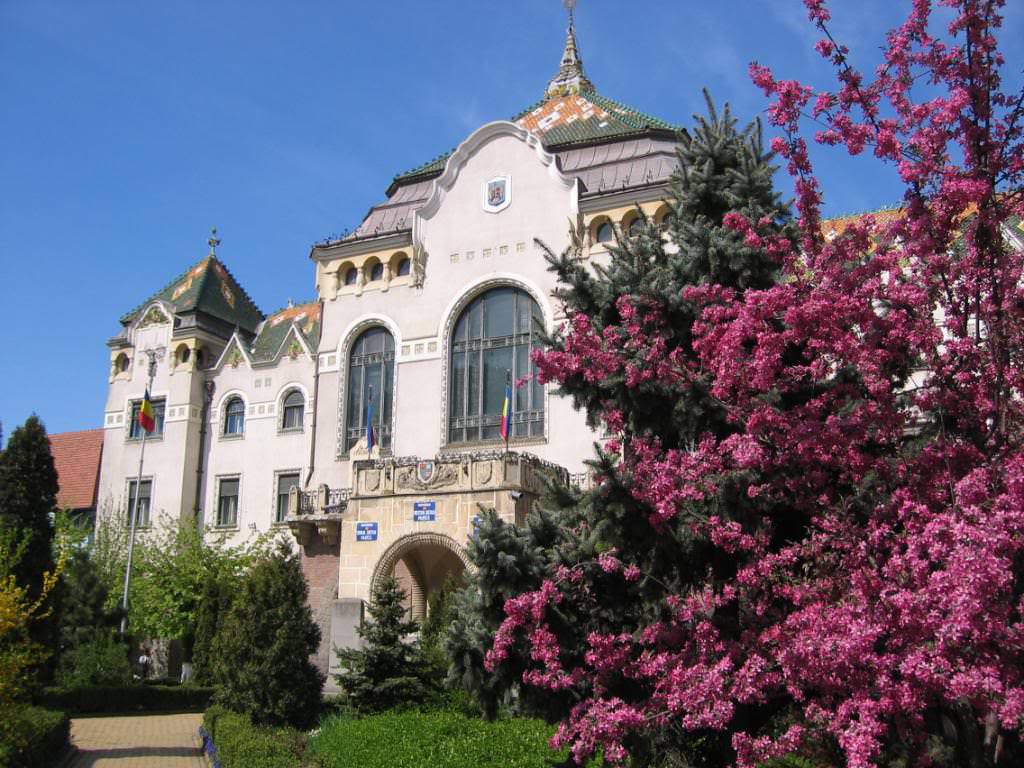
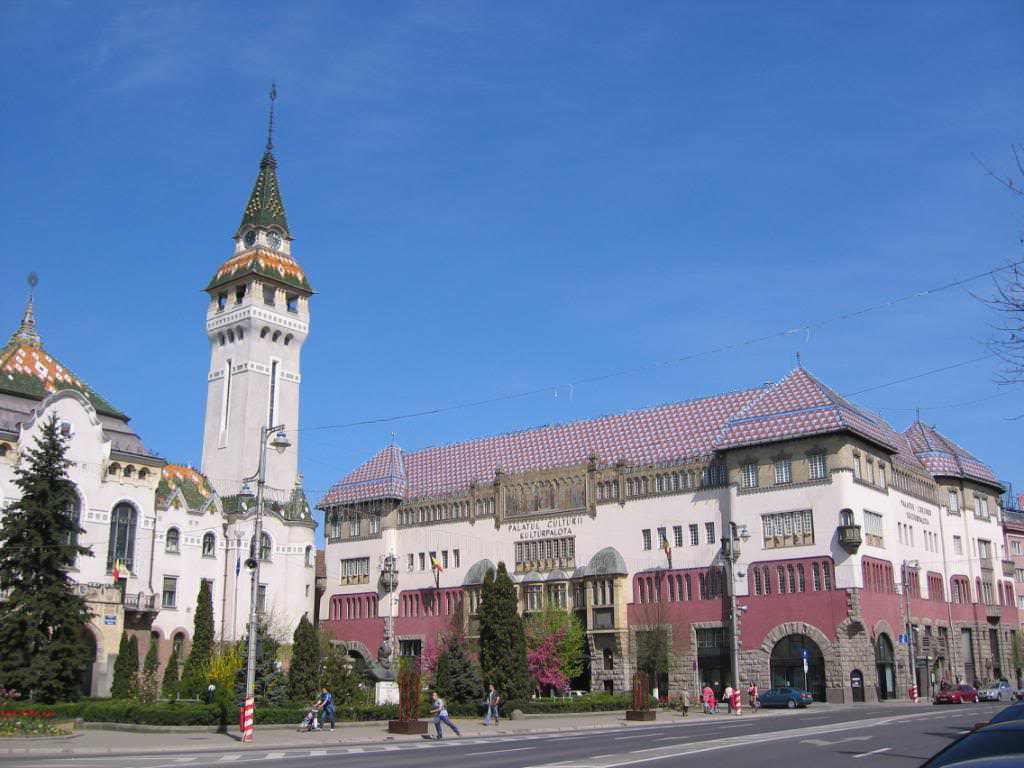
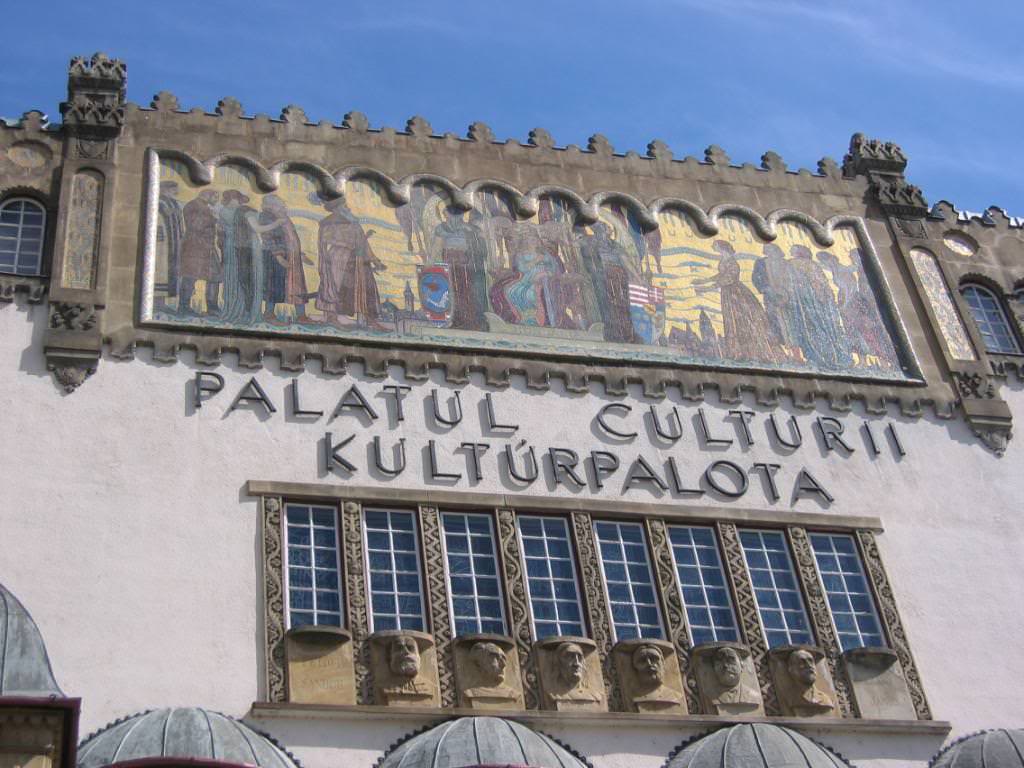

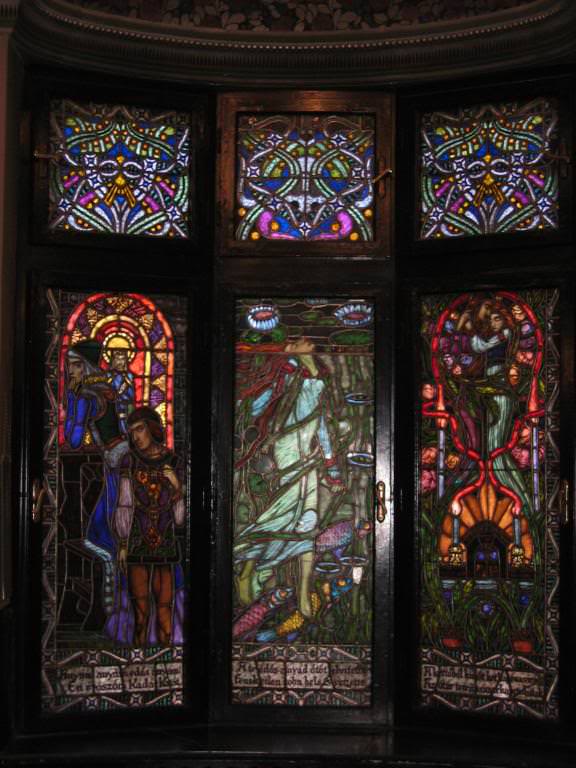
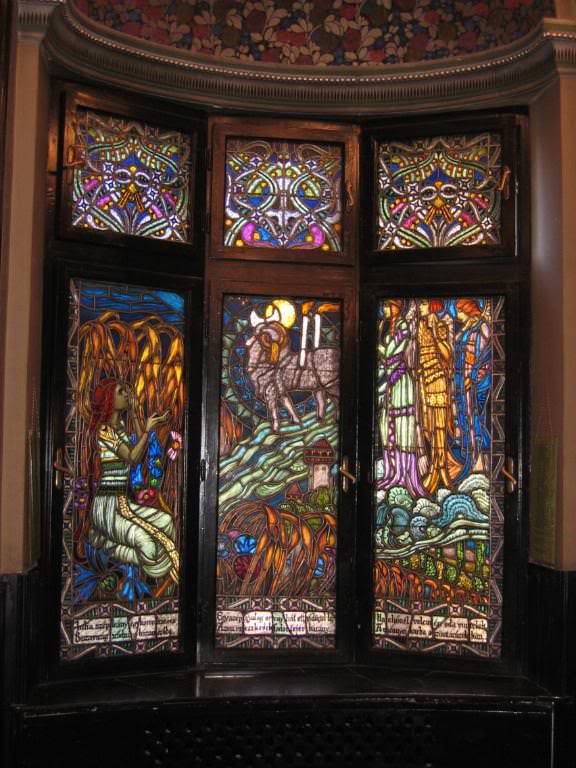

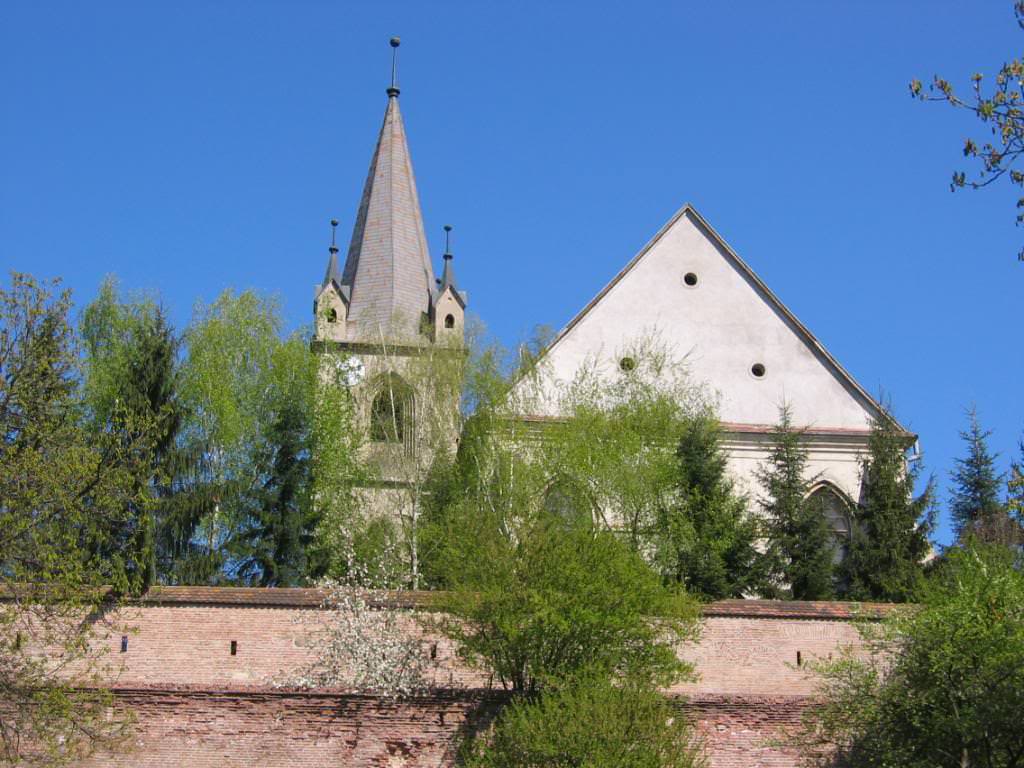
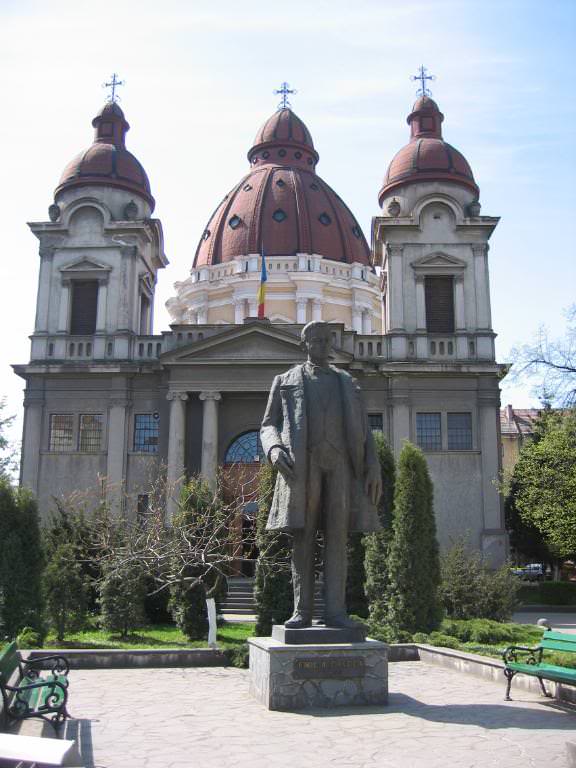
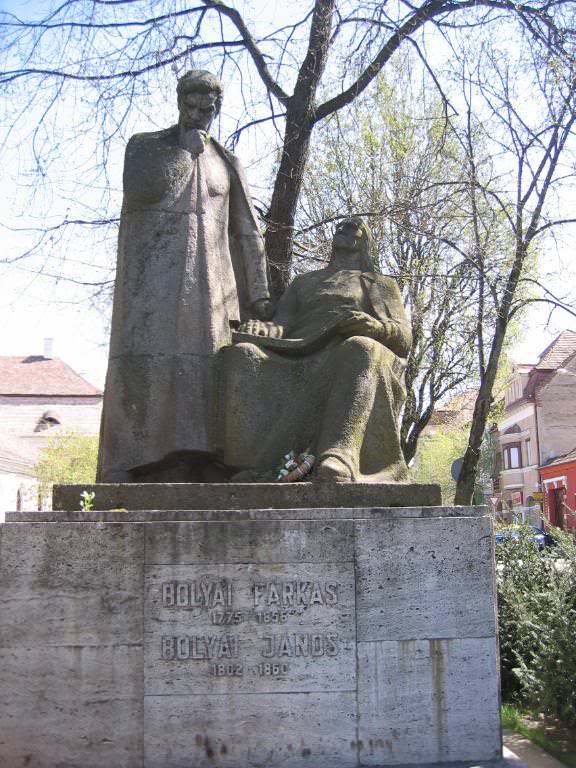
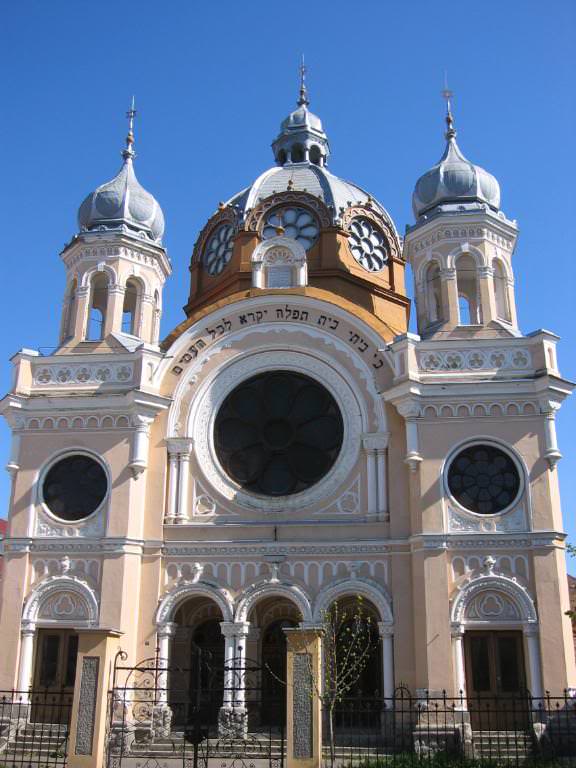
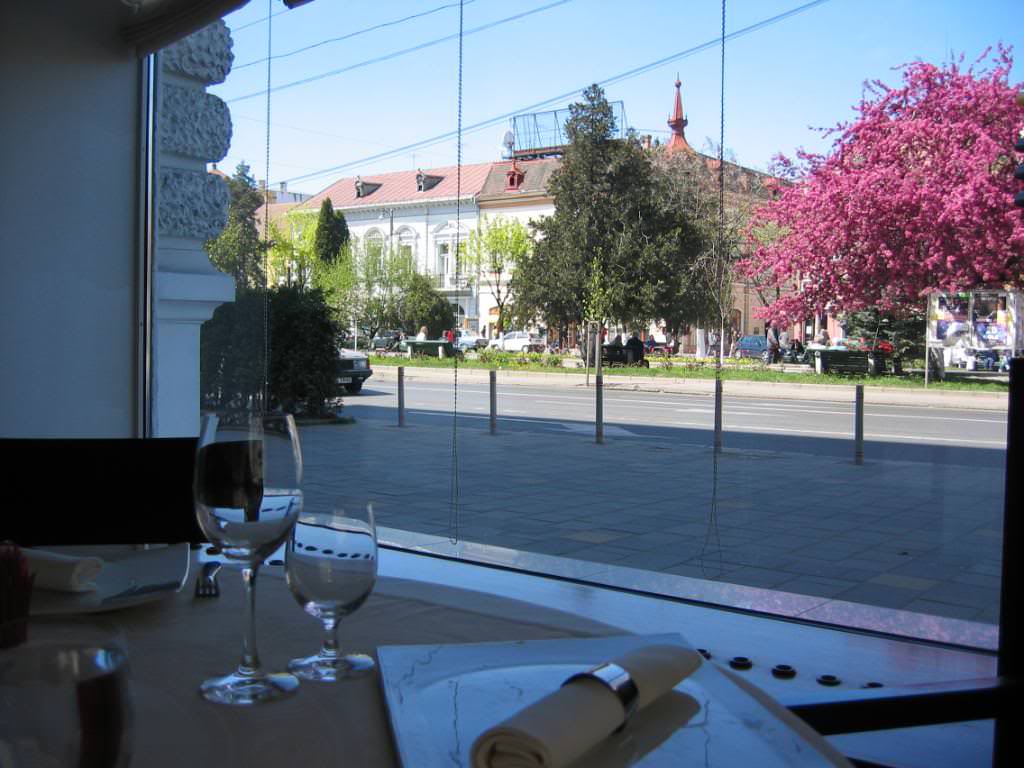

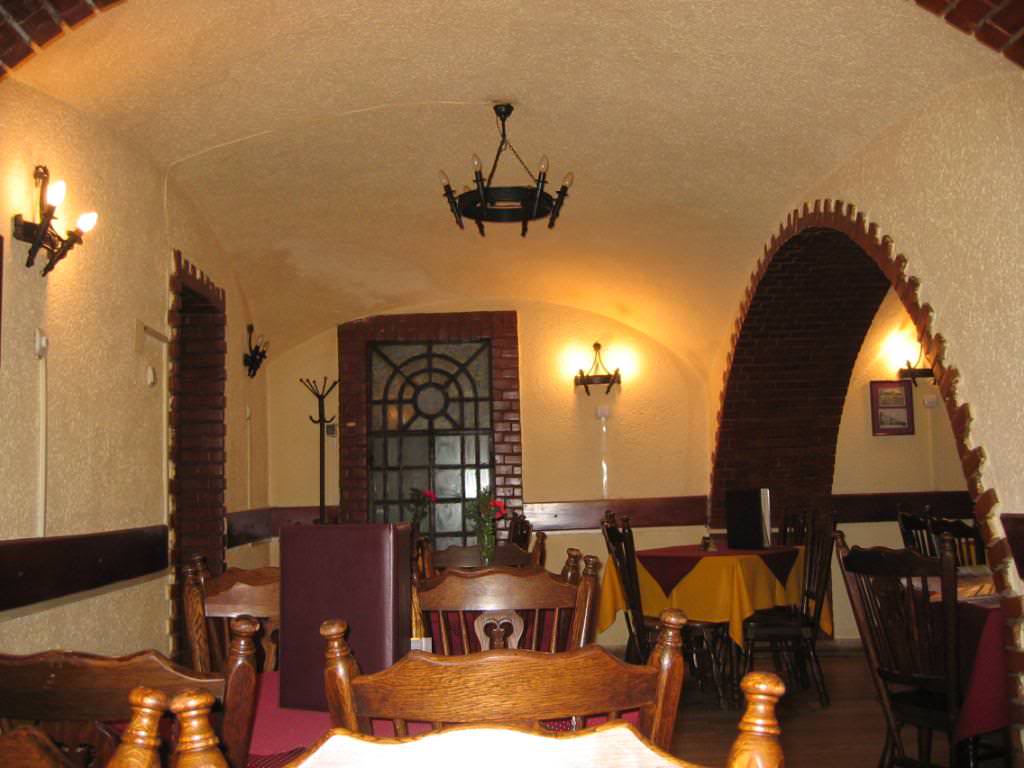
The Palace of Culture in Târgu Mure? | The Traveling Squirrel Chef
Thursday 16th of April 2015
[…] painted walls and ceiling and stained glass at the Palace of Culture [tripadvisor] [europeupclose blogpost] in Târgu Mure? […]